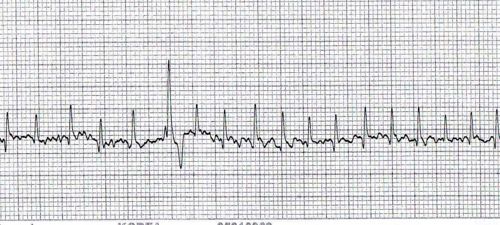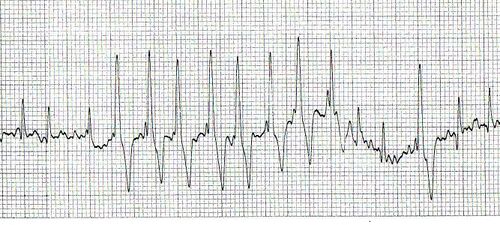Courtesy of C. Antonczyk
Mikey was admitted for an electrocardiogram, echocardiography and thoracic radiographs. The ECG is shown below:
ECG recording in lead II 25mm/sec 10mm/mV
In order to reveal an answer, highlight the underlined or bulleted area using your mouse. The number of bullet points doesn't necessarily indicate a strict number of answers.
For what reason might you perform an ECG?
- In order to diagnose a rhythm disturbance.
What is the average heart rate on the first half of this ECG?
- This recording is 25mm/sec, so 25 of the small boxes represent a second and 5 of the larger boxes represent a second. If you count the number of beats starting from the first thick line over the following 4 seconds (20 of the larger squares) you get 15 beats. So in 4 seconds there were 15 beats. Hence in one minute there will be 15x15 beats. The average heart rate is 225 beats per minute.
Can you see any P waves? Why do you think this might be?
- No. This dog has atrial fibrillation. P waves are absent.
On the first half of the ECG, why does the 6th complex look different to the rest?
- This complex is wider than the others indicating that it is of ventricular origin. It is a ventricular premature complex (VPC)
On the second part of the ECG, what do we call the series of abnormal complexes?
- This is a run of VPCs. As there are more than three in succession, this is called ventricular tachycardia.
Click here to see the results of the ultrasound.

